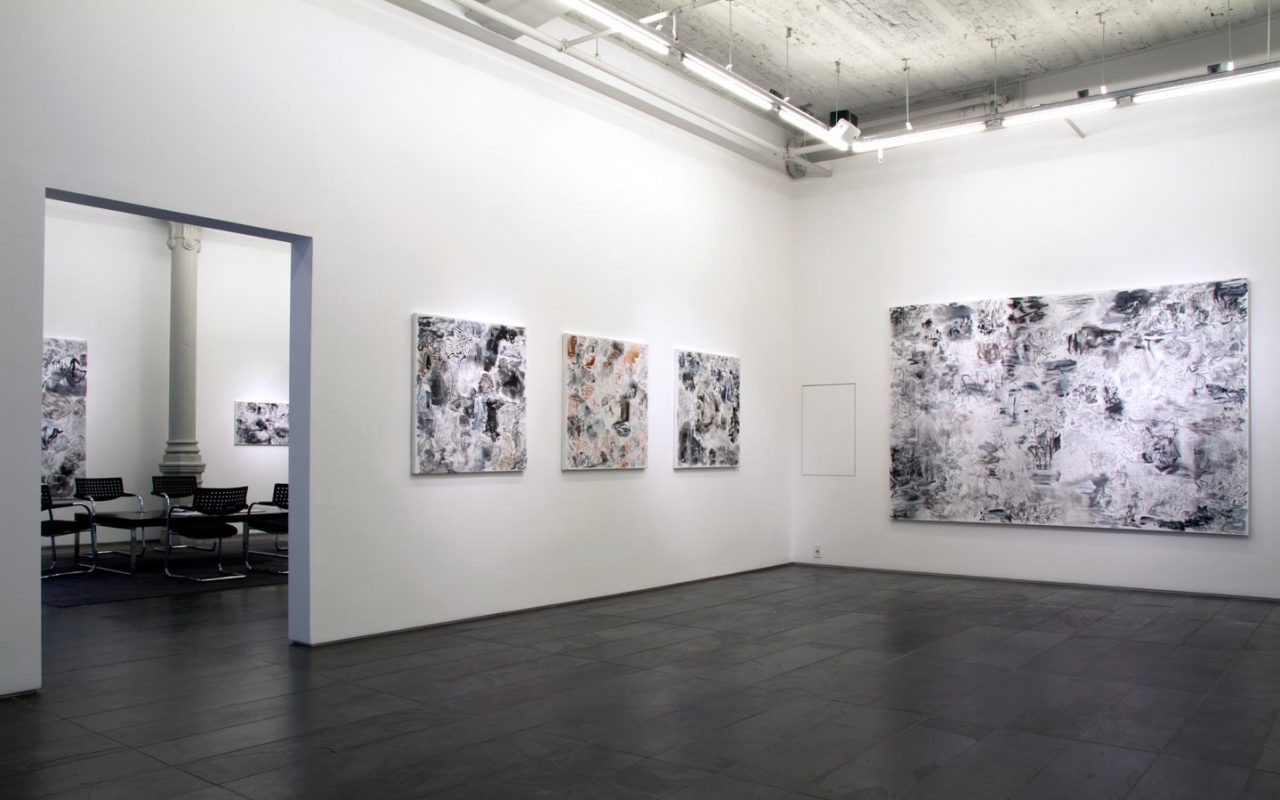These canvases are structured around miniscule drawings, which evoke forms that appear to be abstract from a certain distance. However, when the spectator approaches them, he is able to distinguish tiny people, monsters, castles, landscapes, and much more. Oscillating between figuration and abstraction, the artist gradually creates his own universe.
“All the works presented in this exhibition were produced by combining different techniques, which suggests the artist’s initial decision for the artwork to be as plastic as it is poetic. The strained coexistence of diverse materials on the surface of the canvas generates physical as well as visual contrasts. Consequently, it alters the effects of perspective, space, texture, framework, and atmosphere, in a similar manner as the repetition of particular scenes or narratives, which appear and disappear in harmony with the extreme counterpoint between the contrasts.
By way of the square structure of the painting, the rather general title of Landscape (Paysage) briefly alludes to the genre’s tradition, which is in this particular case deformed by the excessively prolific use of graphic signs from a wide range of sources. Even though this prolific patchwork of multiples registers avoids resorting to the most well-known iconographic elements, it does allow for the possibility of ghostly and shadowy presences through indirect references and echoing repetition. These works also examine the relationship of continuity and contiguity between parts and the whole, as well as method behind the spectator’s attraction and perception, through the use of a purely graphic language.” Eduardo Stupía
